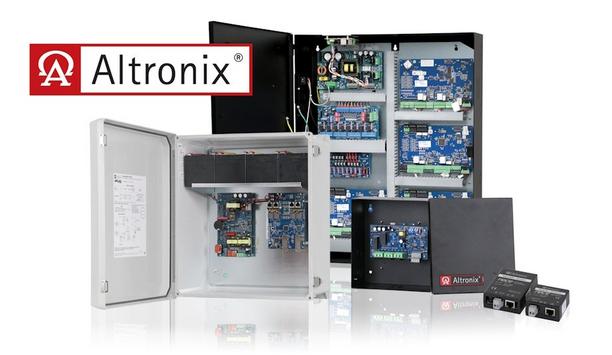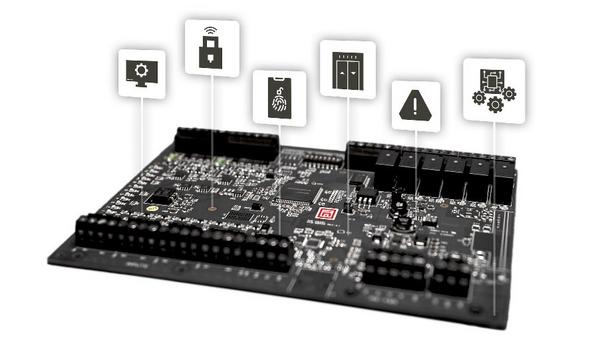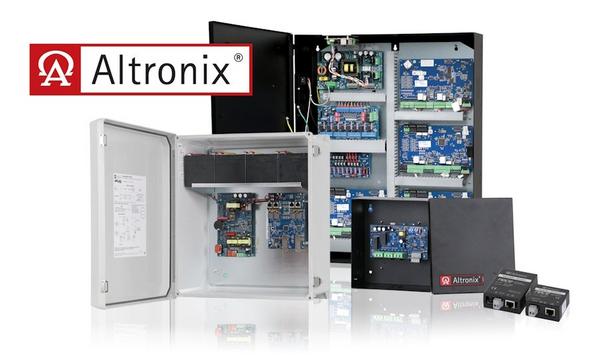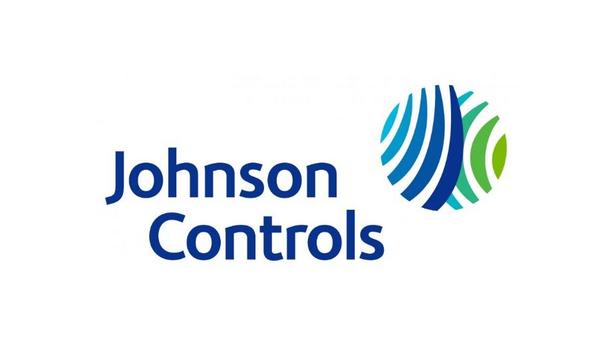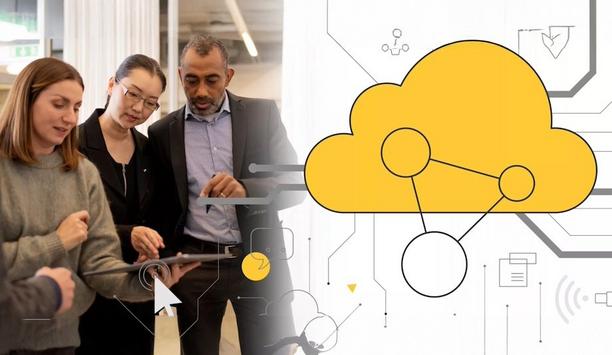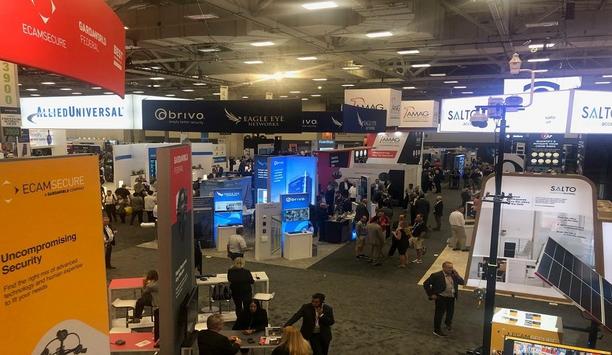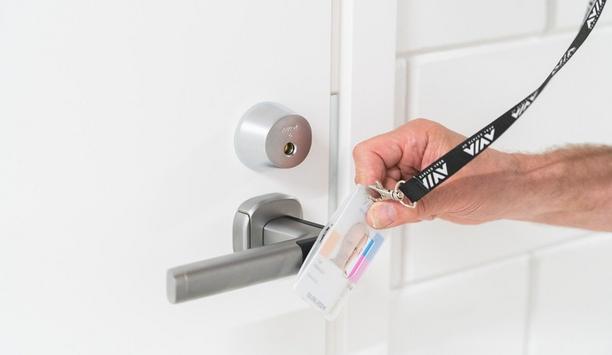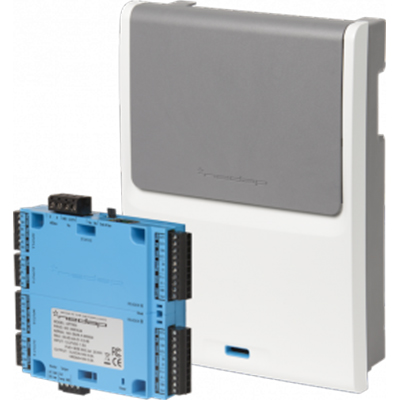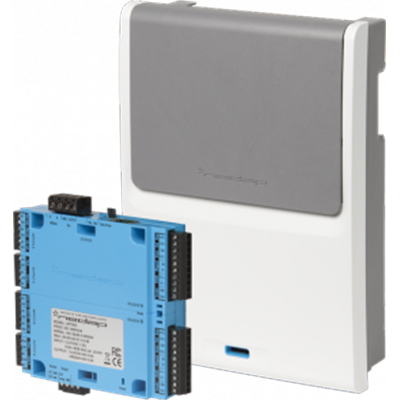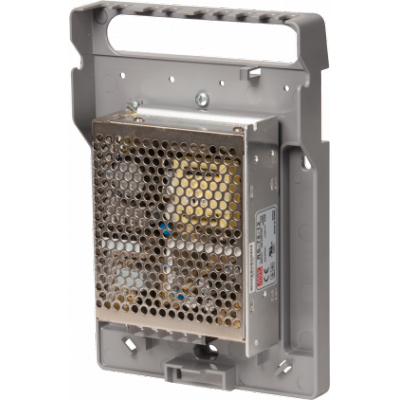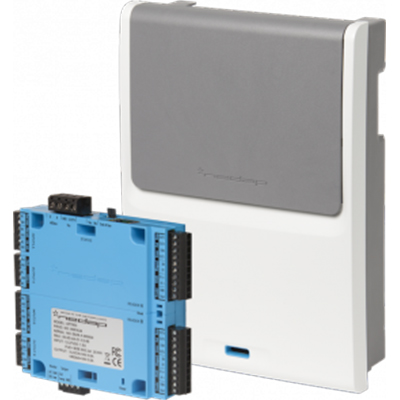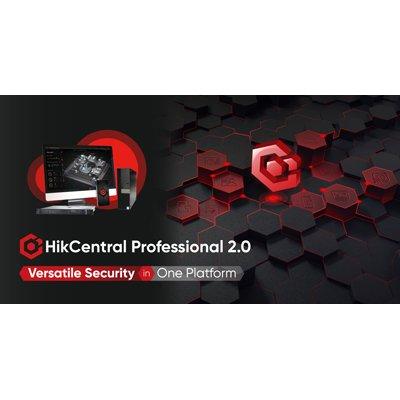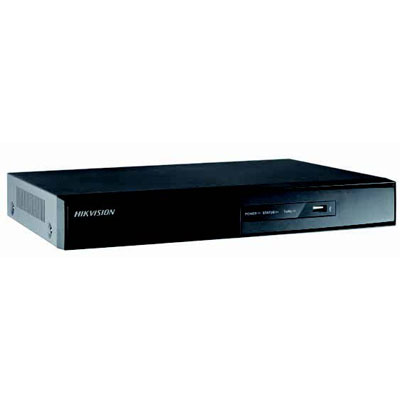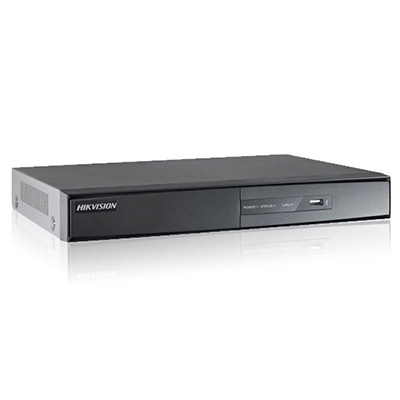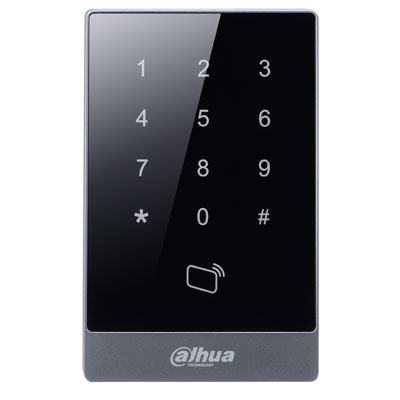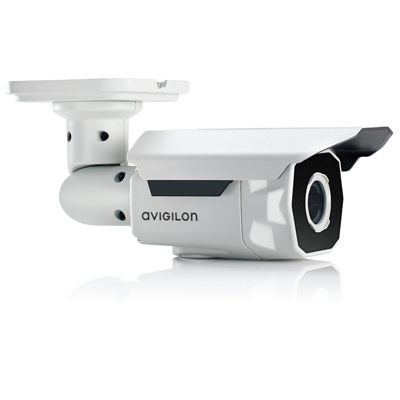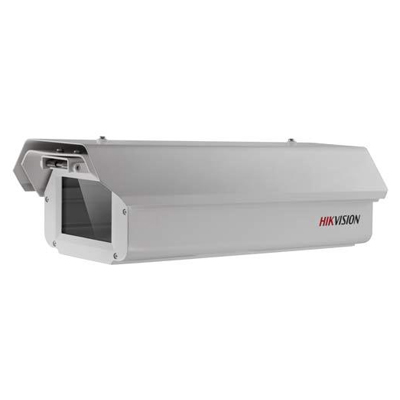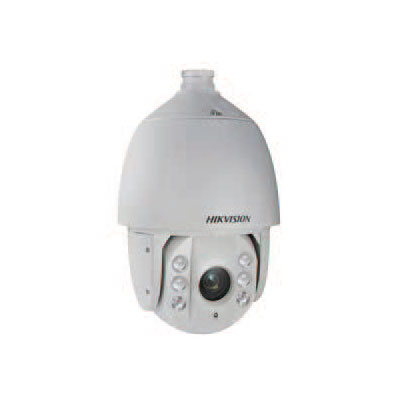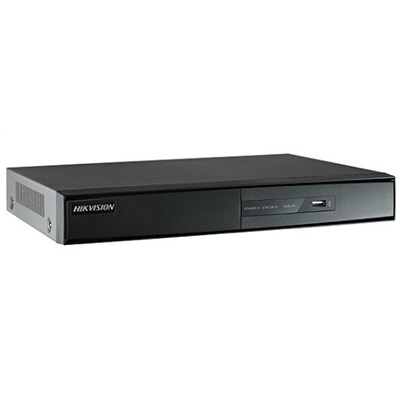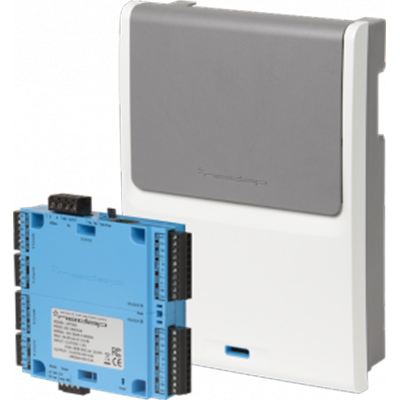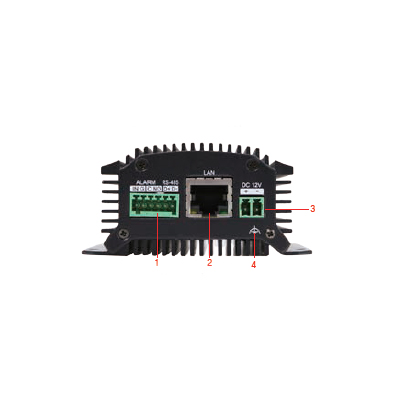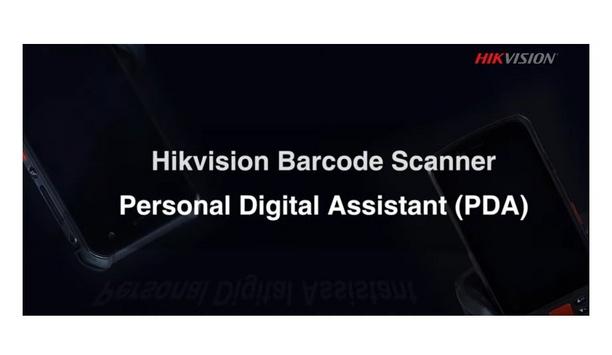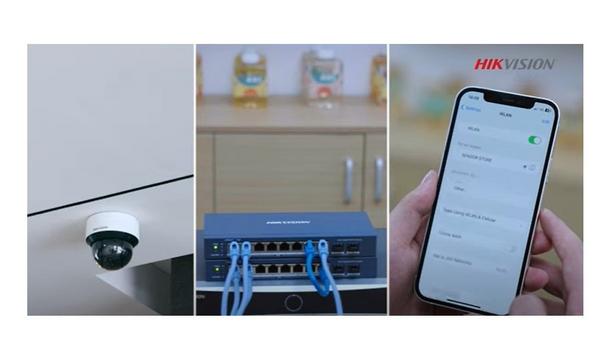Security devices
Award-winning security manufacturer, Gallagher Security, has been awarded the contract to secure the University of Witwatersrand (WITS) in Johannesburg, one of South Africa’s largest universities. Spread across 400 acres in Braamfontein and Parktown, WITS boasts five faculties comprising 35 schools, more than 30 service departments, 11 libraries, 18 halls of residence with 6600 beds, and offers 3416 courses. Gallagher access control system Gallagher replaces the extant access control sy...
His Majesty’s Revenue and Customs (HMRC) has blocked over 100 million malicious emails in the past three years, as cyber threats against UK government services continue to escalate. The data was obtained through a Freedom of Information (FOI) request, where HMRC disclosed detailed figures on the volume of malicious emails blocked from November 2021 to September 2024. Data rise in cyberattacks The data shows a sharp rise in cyberattacks, highlighting the growing threat to the UK govt fav...
AITX’s Robotic Assistance Devices (RAD) has deployed its ROAMEO Gen 4 mobile security robot to the Downtown St. Louis Community Improvement District (CID) in anticipation of the NCAA Men’s Frozen Four Championship, taking place April 10 and 12. ROAMEO’s presence will enhance safety and engagement throughout the heart of the city during this nationally spotlighted event, offering an innovative layer of real-time situational awareness and autonomous patrol. RAD’s interact...
Altronix, a recognised pioneer in power and data transmission for the professional security industry, is showcasing its latest innovations at stand 5/K30 during The Security Event 2025 in Birmingham, UK. The company’s expanding portfolio of products continues to deliver greater versatility and efficiency for systems integrators and end users — streamlining installations, reducing costs, and enhancing system reliability. New technologies and system reliability "The Security Ev...
At ISC West 2025, April 2-4, in booth 11053, they are launching a reintroduction of the name Radionix, a fresh take on a classic brand that is synonymous with innovation and trust in the intrusion security market. Radionix will debut as the new product portfolio name for the company’s line of intrusion panels and its intrusion ecosystem of products. This strategic move to reintroduce Radionix will be a central component of the marketing initiatives around the G Series control panels and o...
Mercury Security, the pioneer in open architecture access control hardware, is launching a new addition to its industry-defining controller platform—the Mercury embedded application environment, an open platform that enables technology partners and OEMs to develop and deploy custom applications directly on Mercury MP Controllers. “We have a lot of exciting things happening at Mercury,” said Steve Lucas, vice president of sales at Mercury Security. “We are excited to...
News
Power over Ethernet (PoE) network switches are frequently used to supply outdoor IP cameras with electricity. Powering IP cameras becomes a challenge, however, when only non-PoE legacy switches are available. Within solar trailers or NEMA-rated pole boxes, operators are left with few power options but connecting batteries or running long cables from wall outlets. Gigabit PoE injector Antaira is introducing at the ISC West its new INJ-C201G-at-24-T industrial Gigabit PoE injector To overcome this obstacle, Antaira is introducing at the International Security Conference & Exposition (ISC West) its new INJ-C201G-at-24-T industrial Gigabit PoE injector, a cost-effective solution to enhance non-PoE legacy switches and routers. It delivers up to 30W of DC power to 802.3af and 802.3at compliant endpoint devices while ensuring high-speed Gigabit data transmission. Integration into network infrastructures Designed for ease of installation, the injector mounts on the same DIN rail as the connected switch within a box or cabinet, eliminating the need for additional AC power lines or replacing a non-PoE switch with a PoE model. Equipped with an internal power booster, the Antaira INJ-C201G-at-24-T supports a wide input range of 12VDC to 55VDC, making it ideal for integration into diverse network infrastructures, including industrial automation powered by standard 24VDC control cabinets. Fast and simple to install The injector mixes an intelligent internal tool that ensures power is given only to PoE-compatible devices Installation requires only one Cat6 cable from the non-PoE Ethernet switch or wireless radio to the INJ-C201G-at-24-T injector’s RJ45 input port, and another cable from the injector’s RJ45 output port to the powered device. The 4-pin terminal block connects to an external power source. Designed to IEEE PoE standards, the injector incorporates an intelligent internal mechanism that ensures power is delivered only to PoE-compatible devices, enabling dependable protection. Antaira INJ-C201G-at-24-T The Antaira INJ-C201G-at-24-T is housed in a durable metal casing that can be conveniently mounted on DIN rails or be wall mounted to suit different work environments. It delivers long-lasting, reliable performance where network devices are exposed to vibration, electrical noise, and temperature fluctuations.
Altronix, the recognised pioneer in power and data transmission products for the professional security industry, is displaying the company’s latest innovations here at ISC West in booth #11073. Features include integrated power and access control solutions that streamline installation and reduce labour costs, and the latest solutions to deploy IP devices utilising coax, fibre or Ethernet infrastructure. Deployment of advanced IP devices "Altronix continues to deliver new and innovative ways to streamline the deployment of advanced IP devices with greater cost-efficiency, versatility and reliability to ensure heightened security and safety,” said Alan Forman, President of Altronix. “We look forward to demonstrating the numerous advantages and benefits our latest product line-up delivers to our installation partners and customers at ISC West 2025.” New Altronix products on display in booth 11073 Netway Spectrum with EBC48 Integration: The Altronix EBC48 recharges 32AH batteries for NetWay Spectrum models in under eight hours to ensure critical security devices remain operating when there is only intermittent power at the pole. New 277VAC input options now available! Pace™: Advanced technology that extends Ethernet connectivity well beyond traditional limitations, supporting distances up to 1000 metres over a single pair or up to 500 metres over structured cabling, providing an ideal solution for challenging long-distance industrial and IP video applications. Circ™: Advanced multi-path/redundant power solutions ensure seamless transitions between two independent 115VAC or 230VAC inputs, eliminating downtime during power interruptions and power failures, to maintain mission-critical security operations. Trove™ Series: Comprehensive pre-wired, pre-configured access and power kits supporting over 50 pioneering access control brands. including AMAG, AXIS, Azure, Brivo, Hirsch, Mercury, Software House, and TDSi. Easily combine Altronix power with access controllers in scalable wall-mount to extended rack-mount configurations for any installation environment, providing a single point for service and maintenance, minimising wall space. TEMPO724Q: New two-channel network programmable 24/7 timer is designed for diverse applications from security, access control, home automation to lighting control and more. Featuring dual form “C” relay contacts, advanced LINQ™ technology for remote programming and diagnostics, and precise scheduling capabilities, it ensures reliable, synchronised control across complex systems. LINQ™ Network Power Management: Sophisticated remote monitoring platform enabling real-time control and comprehensive reporting of power diagnostics, optimising system performance, preventative maintenance, and overall operational uptime. Altronix Trove™ integration solutions Altronix Trove™ integration solutions will be prominently featured across multiple strategic partner locations throughout the event: Honeywell (LenelS2): Experience Altronix Trove integrated access and power solutions within the comprehensive LenelS2 ecosystem at booth #18059. Inner Range: Discover how Altronix Trove enhances Inner Range's security management systems at booth #25099. Hirsch: Explore access control featuring Altronix Trove access power in wall and rack solutions at booth #13089. PDK: See Altronix's power supply units working with PDK's access control technology at booth #13099. Visit Altronix at ISCW booth #11073 and discover how Altronix power can enhance the security infrastructure.
ThreatAware, the pioneering Cyber Asset Attack Surface Management (CAASM) provider, announced the launch of the new version of its cutting-edge platform designed to transform how organisations discover devices and manage their IT assets and security tools. Version 3.0 now enables the remediation of security issues discovered and uncovers previously unknown devices. ThreatAware’s platform ThreatAware’s platform provides a complete view of the IT infrastructure from a single screen Developed to enable users to protect every cyber asset, ThreatAware’s platform ensures complete accuracy through its patent-pending timeline matching technology. This provides real-time monitoring of every device accessing corporate data to ensure security controls are deployed and functioning. With unsecured, unknown devices representing one of the greatest security blind spots, ThreatAware’s platform provides a complete view of the IT infrastructure from a single screen, uncovering hidden risks and previously invisible devices. This enables teams to swiftly identify vulnerabilities and proactively reduce their attack surface. ThreatAware’s innovative design Powered by API’s, ThreatAware’s innovative design integrates seamlessly with existing security tools, standardising data from endpoints and ensuring organisations can account for every asset, including those previously unknown or lacking security controls. With agentless deployment in under 30 minutes, IT and Security teams have instant visibility without the need for complex configuration. Latest product enhancements Latest launch features product enhancements to provide even greater power, flexibility, and visibility The latest launch features product enhancements to provide even greater power, flexibility, and visibility to organisations of assets across increasingly fragmented IT landscapes. This also ensures teams achieve regulatory compliance through continuous monitoring and detailed cyber risk reports to support more informed decision-making. Key features of Version 3.0 ‘Stealth’ device tracking: the most comprehensive approach to device discovery ThreatAware’s latest launch provides a new way of analysing previously invisible devices. By creating a timeline fingerprint of activity across every device, the platform can identify if unknown devices are logging on to the corporate network, uncovering the ‘stealth’ devices that may present a security risk. ThreatAware’s own analysis of IT environments shows that, on average, 15% of devices have gaps in security controls. Organisations also typically discover an average of 30% more devices accessing corporate data than previously known. Track Issue Resolution and Remediation New parts in Version 3.0 will make it even easier for teams to identify and track the key New features in Version 3.0 will make it even easier for teams to identify and track the resolution of any security issues identified. The ‘Action Centre’ enables teams to automate and assign actions and provides teams with full visibility of workflows from identification to resolution. Control, Customisation and Enriched Data ThreatAware’s proprietary timeline matching technology eliminates duplicate records and provides a real time asset inventory with enriched, contextual data. Version 3.0 provides even more customisable tagging to deliver a clear, accurate view of the estate and to monitor trends over time, so that teams can make priorities based on their own risk profile. Fragmented IT landscape Commenting on the launch, CEO and Co-founder Jon Abbott said: “Finding and managing all assets across a fragmented IT landscape in which cloud computing and remote access expand the attack surface, is a huge challenge for all organisations. It only takes one unprotected device, one misconfigured control, or one forgotten asset to create an entry point for attackers." "That's why ThreatAware is committed to delivering 100% accuracy and visibility across your IT estate. The power of the platform is not just in the information we track, it’s how we aggregate and analyse this information to highlight risks that simply wouldn’t otherwise be visible." Latest version of the platform Abbott continues: “Cyber risk is no longer just an IT concern, it’s a critical business issue. Organisations need to have the right tools not only to prepare for cyber threats but also to withstand and recover from disruption, should an attack strike." "The latest version of our platform underscores our commitment to supporting organisations with new features and insights which improve efficiencies and workflows and, ultimately, reduce security risks.”
Johnson Controls, the pioneer for smart, healthy and sustainable buildings, is reinforcing its commitment to providing comprehensive life safety solutions across industries by unveiling solutions designed specifically for the non-acute healthcare and correctional facilities industries. The company’s non-acute bundled solution combines advanced security and fire prevention technologies to help modernise healthcare facilities, improve safety and enhance overall patient and staff experience. Additionally, Johnson Controls is expanding its correctional facilities offerings to address the growing challenges of outdated and often overlooked buildings, helping communities ensure that they have the necessary infrastructure to enhance security and emergency response. Enhancing security and efficiency in non-acute healthcare As demand for clinics, urgent care centres, outpatient facilities, and other non-acute healthcare environments increases, Johnson Controls is providing bundled solutions that integrate critical aspects of security and fire prevention technologies including: Video Surveillance & Access Control – Strengthening physical security and facility oversight with AI and data analytics. Weapons & Gunshot Detection – Leveraging a cloud-based security solution to enhance threat prevention. Fire Safety Innovations – Suppression systems such as connected sprinkler systems and emergency lighting that can improve safety. Integrating advanced security “By integrating advanced security, fire prevention and technologies that connect building systems, Johnson Controls is helping to create safer, more resilient non-acute healthcare environments,” said James Burke, vice president, product sales & lifecycle solutions at Johnson Controls. “Our latest bundle leverages industry expertise and advanced technology to streamline operations, optimise staffing resources and can enhance patient and staff safety in outpatient clinics, urgent care centres, long-term care facilities and more. In these settings—where staff are stretched thin and operational efficiency directly impacts patient care—having the right technologies and service helps to provide a safe, comfortable environment for both patients and caregivers.” Strengthening correctional facilities Johnson Controls has taken steps to enhance security for penal facilities, including state and federal prisons In parallel, Johnson Controls has taken steps to enhance security for correctional facilities including state and federal prisons, county and local jails and detention centres. Across the U.S. and Canada, Johnson Controls is addressing the challenges that correctional facilities can face due to outdated infrastructure and decades of underinvestment by upgrading HVAC, fire, and security systems to modern standards, improving both safety and operational efficiency. Johnson Controls security systems Johnson Controls provides correctional facilities with tailored solutions such as video surveillance, visitor management, fire detection systems, fire suppression and more to help create safer and more secure environments for both the occupants and facilities. “Nearly one-third of correctional facilities are over 50 years old and are in critical need of key upgrades – from security systems to mechanical equipment,” said Greg Parker, vice president, lifecycle solutions at Johnson Controls. “Not only can these upgrades enhance overall conditions and safety for facility personnel, inmates and visitors, but the utility bills can also be lower due to overall operational efficiency.” Physical and cyber security Johnson Controls has a strong fact across industry sectors and continues to develop tailored solutions Johnson Controls has a strong presence across industry sectors and continues to develop tailored solutions that prioritise security alongside efficiency and sustainability. With a focus on innovation, the company is committed to expanding its expertise in high-growth industries, including healthcare, education, government and data centres, by delivering advanced solutions that strengthen physical and cyber security, safeguard critical infrastructure and ensure resilient operations. Next era for commercial buildings Johnson Controls proudly celebrates its 140th anniversary in 2025, marking a legacy of innovation and leadership in smart, safe, healthy and sustainable solutions. The company continues to redefine building performance, driving the next era for commercial buildings, transforming industries and powering its customers’ missions.
Axis Communications, the pioneer in video surveillance, is proud to announce the continued growth of Axis Cloud Connect as key partners unveil new solutions and integrations at this year’s ISC West Conference. One year after its launch, Axis Cloud Connect is playing a pivotal role in advancing cloud-connected solutions, with partners including Eagle Eye Networks, SecuriThings, and Wesco introducing new innovations that leverage its scalability, flexibility, and industry-pioneering cybersecurity. Early adopters of Axis Cloud Connect Milestone Systems announced plans for video management integration with Axis’ cloud platform These developments include VMS integrations, enhancements to video analytics, device lifecycle management, and data aggregation. What’s more, early adopters of Axis Cloud Connect—such as Genetec with its Security Centre SaaS and Kone’s 24/7 Emergency Video Communications solution—continue to leverage the platform, further showcasing its ability to empower solutions across a wide range of use cases in various industries. Most recently, long-time partner Milestone Systems announced plans for video management integration with Axis’ cloud platform. The latest solutions built with Axis Cloud Connect will be featured at ISC West in Las Vegas, NV, from April 2-4, 2025. Axis Cloud Connect innovation and expanding cloud solutions Launched at ISC West in 2024, Axis Cloud Connect has proven to be a transformative platform for Axis and its partners, driving innovation and growth in the cloud-connected IoT space for security, business intelligence and operational efficiency. This open, cloud-based platform was designed to deliver secure, flexible, and scalable solutions. It integrates seamlessly with Axis devices, enabling managed services that support system and device management, video and data delivery, and robust cybersecurity. The channel-friendly platform delivers solutions and services for system integrators and customers, and it’s designed to enable Axis development partners to create their own cloud-based solutions—addressing market opportunities and customer needs. Axis Communications’ unique approach to cloud technology continues to foster innovation and accelerate time to market, empowering partners to meet the ever-evolving demands of a connected world. Future of security and IoT “Over the past year, Axis Cloud Connect has helped transform the way security, business intelligence and operational solutions are deployed, utilised, and managed. The open platform’s flexibility, scalability, and advanced cybersecurity features have enabled our partners to innovate and deliver cutting-edge solutions that meet the dynamic needs of the market,” said Fredrik Nilsson, VP, Americas, Axis Communications. “The progress made by our partners is a testament to the power of openness and collaboration, and the immense potential of Axis Cloud Connect to shape the future of security and IoT.” Impact on the security and surveillance industry Axis Cloud Connect recently won a BIG Innovation Award from the Business Intelligence Group Axis Cloud Connect recently won a BIG Innovation Award from the Business Intelligence Group, recognising the platform for its transformative impact on the security and surveillance industry. Judges commended the platform’s ability to seamlessly integrate cloud, on-premises, and edge technologies, offering high-level cybersecurity, scalability, and easy integration. The Business Intelligence Group is a research-based group that recognises exceptional talent and performance, with a panel of judges from diverse industries who evaluate creativity, measurable results, and overall impact when selecting award winners. Eagle Eye Networks: Advancing cloud video management Eagle Eye Networks, a pioneer in cloud video management systems (VMS), has integrated Axis Cloud Connect into its offerings to enhance the capabilities of businesses globally using Axis Communications cameras. Through this integration, customers can now directly connect Axis cameras to the Eagle Eye Cloud VMS via Eagle Eye Camera Direct, enabling seamless access to video data from anywhere. This eliminates the need for on-premise bridges or video recorders, streamlining deployment while maintaining high-quality video and flexible retention options. Cloud-based video products and solutions “This integration brings Axis Communications’ world-class security cameras and other devices directly to the cloud in a way that focuses on cybersecurity and is very easy to manage,” said Dean Drako, Eagle Eye Networks CEO. “Eagle Eye leverages Axis analytics and AI, incorporating results into search, alerting, and automation capabilities of the Eagle Eye Cloud VMS, delivering a powerful solution to businesses customers across the globe.” Eagle Eye Networks cloud-based video products and solutions integrated with Axis Cloud Connect, will be exhibited in Eagle Eye Networks booth #20037 and Axis Communications booth #14051 at ISC West. Genetec: Cloud video management and edge capabilities Genetec has integrated with Axis Cloud Connect to enhance its Security Centre SaaS offering Genetec, a pioneer in unified security solutions, has further integrated with Axis Cloud Connect to enhance its Security Centre SaaS offering. With this development, Genetec now supports a broader range of Axis devices, including the latest ARTPEC-9-based cameras, multi-sensor cameras, and cloud-managed appliances. This partnership enables more efficient and scalable cloud deployments, advanced edge video capabilities, and seamless integration for better performance and reliability across video surveillance systems. Additionally, integration with more Axis cloud-ready devices is planned to further streamline operations for security teams. Capabilities of Axis Cloud Connect Notably, two years ago, Axis and Genetec also furthered their collaboration in the access control space with the launch of Axis Powered by Genetec, which has since expanded with the recent introduction of the A1710 (4-door controller) and A1810 (8-door controller). What’s more, these controllers can now also leverage the capabilities of Axis Cloud Connect, further boosting operational efficiency in integrated security systems. Advanced edge video capabilities “We’re proud to be one of the first Axis partners to leverage the Axis Cloud Connect platform, and the success we've seen has led us to further deepen our integration,” said Oktay Yildiz, Senior Manager, Product Management, Security Centre SaaS Genetec. “Axis Cloud Connect truly complements and enhances our Security Centre SaaS, allowing us to offer customers greater scalability, seamless cloud integration, and advanced edge video capabilities. This collaboration strengthens our ability to deliver innovative, high-performance security solutions with superior cybersecurity and greater flexibility across all deployment scenarios.” Genetec Security Centre SaaS solutions, enhanced with Axis Cloud Connect, will be showcased in the Genetec booth #13062 at ISC West. SecuriThings: Enhancing device lifecycle management SecuriThings has integrated with Axis Cloud Connect to further enhance its device lifecycle management SecuriThings has integrated with Axis Cloud Connect to further enhance its device lifecycle management capabilities. By leveraging Axis Cloud Connect’s powerful platform, SecuriThings is able to offer customers greater scalability, efficient real-time monitoring, and strengthened cybersecurity across their security device networks. This integration helps bolster SecuriThings’ ability to provide a seamless and efficient solution for managing video surveillance devices and systems, ensuring devices stay secure and operational over time. Device management with Axis’ powerful cloud platform “The flexibility and reliability of Axis Cloud Connect will enable us to deliver even more advanced device lifecycle management solutions to our customers,” said Roy Dagan, CEO, SecuriThings. “By combining our expertise in device management with Axis’ powerful cloud platform, we are helping our customers achieve greater efficiency, seamless scalability, and enhanced cybersecurity—ensuring their devices always have the latest, most relevant OS and firmware. SecuriThings is proud to expand our relationship with Axis Communications by integrating with Axis Cloud Connect.” SecuriThings’ latest offering, including its Axis Cloud Connect-based solutions, will be demoed in SecuriThings booth #32051 and Axis Communications booth #14051 at ISC West. Wesco: Empowering smarter decisions with real-time data Wesco has integrated Axis Cloud Connect with its entroCIM aggregation platform Wesco, a pioneering provider of business-to-business distribution, logistic services, and supply chain solutions, has integrated Axis Cloud Connect with its entroCIM aggregation platform, which centralises and analyses data from multiple devices to optimise building and security management. This integration enhances entroCIM by providing seamless connectivity and scalability, while leveraging Axis’ high-quality devices to generate valuable, real-time data. The result is smarter decision-making, improved security, and greater operational efficiency across environments. Axis’ cloud capabilities and advanced devices “Our entroCIM platform harnesses the power of Axis Cloud Connect to provide our customers with a unified, real-time view of their security systems and operational data,” said Tara Dunning, Vice President of Global Security and Infrastructure, Wesco. “By leveraging Axis’ cloud capabilities and advanced devices, this integration empowers users to make data-driven decisions that enhance safety and security, optimise operations, and improve overall efficiency.” Wesco’s full service and solution offering, including its entroCIM platform built with Axis Cloud Connect, will be showcased in the Wesco booth #20017 at ISC West. Kone and Milestone Systems: Future initiatives Kone continues to leverage Axis Cloud Connect for its 24/7 Emergency Video Communications solution Kone, a pioneer in the elevator and escalator industry, continues to leverage Axis Cloud Connect for its 24/7 Emergency Video Communications solution. This proven, reliable solution provides live monitoring, two-way communications and emergency response for elevator and building safety and security. Meanwhile, Milestone has just announced its future commitment to Axis Cloud Connect, recognising the platform’s key advantages when it comes to growth, connectivity, and secure operation. As both companies leverage Axis Cloud Connect, they underscore the platform's ability to meet the evolving needs of video management solutions and services for diverse use cases. Intelligent network technology Axis Communications remains at the forefront of innovation, with solutions like Axis Cloud Connect playing a central role in delivering open, secure, and forward-thinking technologies. Recent integrations and innovations from partners like Eagle Eye Networks, SecuriThings, and Wesco highlight the importance of these core attributes, and the collaborative approach needed to address complex technological challenges. “We are eager to advance our Axis Cloud Connect platform and witness the impactful contributions from our partners,” said Nilsson. “With cybersecurity, flexibility, and scalability as key tenets, Axis is committed to working closely with our partners to deliver next-generation solutions for a safer, smarter world.”
Advanced Data Risk Management (ADRM), a pioneer in security consulting and managed security services and EyeOTmonitor, a pioneer in network and systems health management for the security industry, are proud to announce a strategic partnership. This collaboration will integrate EyeOTmonitor’s advanced health monitoring capabilities into ADRM’s Security Management Platform, DEFENDER, providing clients with enhanced system health monitoring and real-time change management awareness within their security ecosystems. Integrate with DEFENDER Integrating EyeOTmonitor with DEFENDER will enhance DEFENDER’s native health monitoring capabilities, providing even greater insight into security devices, services, and systems for users. Organisations already using EyeOTmonitor will be able to seamlessly integrate with DEFENDER, consolidating operational visibility into a single platform. Together, these capabilities create a deeper, more proactive approach to maintaining a secure and resilient security environment. DEFENDER security-specific devices Integrating EyeOTmonitor with DEFENDER will enhance DEFENDER’s native health monitoring abilities “This partnership significantly strengthens DEFENDER’s health monitoring capabilities,” said Matt Isgur, ADRM’s Chief Technology Officer. “EyeOTmonitor will seamlessly integrate with DEFENDER to provide enhanced health monitoring for security-specific devices, services, and systems." "In addition to real-time system health insights, DEFENDER will be able to leverage EyeOTmonitor to track environmental changes, ensuring our clients have a comprehensive and proactive view of their security infrastructure in real-time.” EyeOTmonitor platform Kirill Sokolinsky, COO & CPO of EyeOTmonitor, added, “The EyeOTmonitor platform is the perfect match for DEFENDER." "The output from our systems will significantly enhance the health monitoring and complete operating picture ADRM provides for their clients. This is a great win for both of our organisations as well as the security industry as a whole.” Innovation in the security industry Both ADRM and EyeOTmonitor are nimble, forward-thinking organisations that originated as Managed Systems Providers. Their shared commitment to innovation in the security industry makes this partnership a natural fit, strengthening both companies' ability to deliver cutting-edge security solutions.


Expert commentary
In today’s world, almost any electronic security system holds the potential to become a gateway for cybercriminals. With physical security and cybersecurity increasingly entwined, security professionals aren’t doing their job unless they take all possible precautions to lock down unauthorised access to camera systems, access control platforms, intercoms, and other network-based security devices and solutions. Let’s explore the many steps companies should take throughout their security technologies’ lifecycle – from choosing a vendor all the way through device decommissioning – to avoid making the common mistakes that leave systems, and the networks they reside on, vulnerable to attack and sabotage. Prepurchase phase: Laying the groundwork for cybersecurity 1. Conduct a Vendor Risk Assessment IT departments often rely on the same Vendor Risk Assessment criteria they use for evaluating IT equipment manufacturers when considering the suitability of physical security vendors. While commonalities exist between how to assess these disparate solutions, there are also differences that require distinct scrutiny. For example, device endpoints within physical security systems run on custom Linux Kernels and therefore do not utilise standard Linux distributions like Red Hat, Ubuntu, or Debian. IT divisions often rely on the same Vendor Risk Assessment criteria they use for evaluating IT kit A comprehensive evaluation should examine how each security solutions manufacturer handles its software development life cycles. Ideally, vendors should adhere to a recognised framework when developing both their platform management and device-specific software. In 2021, Executive Order 14028 made it a bit easier for companies to evaluate vendors by providing guidelines for evaluating software security, the practices of the software developer, and methods to demonstrate conformance with secure practices, specifically referencing the NIST SP 800-218 Secure Software Development Framework. In short, a good vendor should have documentation that explains everything it’s doing to address cybersecurity from development, through releases and ongoing maintenance. 2. Obtain Software Update Schedules The frequency with which manufacturers update their software varies. Each company is different. If you’re their customer, it shouldn't matter whether the vendor schedules updates every six months, three months, or more often than that. What does matter is that you know what to expect and have a plan for how to deal with that reality. For example, if updates only occur every six months, under what conditions are patches released to address vulnerabilities that emerge between updates? Customers must understand how often they'll be updating the software on their devices and ensure they have the resources to make it happen. Make sure stakeholders agree, upfront, who will be performing the software updates. Will it be the integrator who installed the system, the physical security system staff, the IT team, or the end user? Keeping an entire system current is a huge challenge, but a non-negotiable responsibility. Manufacturers who don't issue frequent releases and patches put the onus on customers to handle mitigation efforts on their own. In these instances, IT departments must be prepared to employ network segmentation, firewalls, security whitelists/blacklists, and other methods to protect their systems until a patch is released. If a company's security team has typically updated firmware only when something breaks, these additional responsibilities most likely require greater collaboration with IT departments and a shift in how security systems are managed. 3. Know the Warranty Terms and Duration of Software Support Organisations should understand the warranty policies for the devices they purchase Organisations should understand the warranty policies for the devices they purchase. Even more important is knowing when a device's software support will expire. Software support should extend well beyond hardware coverage. For example, if a camera has a five-year hardware warranty, customers should reasonably expect an additional five years of software support. When that period ends, companies must plan on replacing the device – even if it still works well. Without software updates, the device lacks vulnerability support and becomes too risky to remain on the network. Manufacturers should be transparent about their warranty and software support policies, helping organisations plan for device replacements that align with cybersecurity needs. 4. Request a Software Bill of Materials (SBOM) During the pre-discovery process, customers should request a Software Bill of Materials (SBOM) that provides a detailed inventory of the software running on each device, including open-source components. By revealing what software is "under the hood," the SBOM allows IT departments to be vigilant in protecting the company's systems from exposed vulnerabilities. For example, a customer should understand how Transport Layer Security (TLS) is being handled to secure a security solution's web server if it’s an open-source component like OpenSSL. 5. Assess Vulnerability Disclosure Practices CNA manufacturers represent the gold standard in cybersecurity practices Understanding how a manufacturer handles vulnerabilities is essential. Ideally, they should be a Certified Naming Authority (CAN) and report common vulnerabilities and exposures (CVEs) to national vulnerability databases such as NIST and MITRE. Doing so automatically includes any disclosed vulnerabilities associated with their devices in vulnerability scanners' databases. CNA manufacturers represent the gold standard in cybersecurity practices, but most security manufacturers do not reach this level. At a minimum, the vendors you choose to work with should have an email notification system in place to alert customers to new vulnerabilities. Remember – email notifications are only as reliable as the employees managing them, so investigate whether the manufacturer has a strong track record of keeping up with such communications. Ask to speak with customer references who have been using the solution for an extended period to ensure the vendor is diligent in its communications. Configuration phase: Ensuring a secure setup 1. Use Hardening Guides Once a device is purchased, configuring it securely is the next critical step. Manufacturers should publish hardening guides that detail the security controls available for their products and recommended practices for implementation. Between the features offered by the vendor and your company's own cybersecurity policies, make sure all possible encryption options are activated. Using HTTPS is vital for ensuring secure communication with devices. Many physical security devices default to HTTP to accommodate customer-specific network topologies and certificate management. Failing to implement HTTPS can leave sensitive metadata unencrypted and vulnerable to interception. 2. Consider Advanced Encryption Protocols Protocols are necessary to protect video data in transit from cameras to the VMS Some solutions offer built-in encryption protocols, like MACsec, which makes it impossible for data to be compromised as it is transmitted over the network. HTTPS is still necessary to secure the connection to the devices’ webservice, but while customers set up and configure their devices, MACsec will keep network data safe. Additionally, if you want to encrypt video streams, consider protocols such as Secure Real-Time Transport Protocol (SRTP), which secures the transmission of audio and video data over the Internet, or tunnelling methods like Secure Socket Tunnelling Protocol (SSTP), which encapsulate data packets for safe transmission between two points, even if the network is insecure. Such protocols are necessary to protect video data in transit from cameras to the Video Management System (VMS). Encryption should also extend to the VMS hard drive where video is stored. There are different methodologies to do that, but ultimately the goal is to encrypt data in transit and in storage. 3. Implement Remote Syslog In the case of a breach, each device maintains a set of logs that are useful for forensic investigations. However, if a device gets hacked, its log may not be accessible. Best practices dictate that companies should set up a remote Syslog server that maintains a copy of all device logs within a central repository. In addition to providing redundant data for investigations, a Syslog offers IT systems an efficient way to look for anomalies. Cybersecurity teams will receive immediate notification for events like unsuccessful login attempts so they can quickly figure out what's happening. Who is trying to log in? Why on that particular device? 4. Practice Healthy Password Hygiene Ideally, organisations should move towards using Active Directory or Single Sign-On (SSO) solutions One of the most basic and yet overlooked aspects of cybersecurity is the failure to manage user accounts meticulously. Many organisations use the same username and password for all security devices because it's simply too cumbersome to manage a network of devices in which each requires a separate, unique login. It's assumed that the system's primary administrators are the only ones who know the universal password. However, the system becomes vulnerable if anyone within this select group leaves the company and the password isn't changed or deleted right away. Ideally, organisations should move towards using Active Directory or Single Sign-On (SSO) solutions. This approach ensures that employees throughout a company are each assigned a unique login credential that they use for any systems they use throughout the organisation. When they leave, their passwords and access are universally terminated along with their accounts. If SSO is not an option, regular password changes and prompt account deactivation are critical. Decommissioning phase: Securely retiring devices At some point, physical security devices will reach the end of their useful life. When that time comes, companies must take care in how they dispose of their devices. A good vendor will provide guidance on how to clear memory chipsets and restore factory defaults. Improper decommissioning can lead to severe risks. For example, if an improperly decommissioned device is sold on the secondary market or retrieved from a dumpster, an attacker could gain access to sensitive network configurations and use this information for malicious purposes. Conclusion Deploying physical security solutions involves more than just securing buildings and assets; it also requires robust measures to protect against cybersecurity threats. From assessing vendors and understanding update policies to configuring devices securely and managing decommissioning processes, each step presents potential pitfalls that, if overlooked, could expose organisations to significant risks. By incorporating the techniques discussed into their deployment protocols, organisations can ensure their physical security solutions provide comprehensive physical and digital protection.
Rapid technological advancement, artificial intelligence (AI) and machine learning (ML) are revolutionising traditional on-premises video security systems. These next-level tools are not just enhancing video data capabilities; they're transforming how businesses approach security, operational efficiency, and information analysis. Video analytics have been a part of security systems for many years, but the arrival of deep learning in 2009 marked a turning point. By training neural networks, basic analytics tasks like motion detection, object detection, and tracking objects within scenes have become commonplace. This leap forward has paved the way for more sophisticated AI and ML applications in video security. Proactive security measures AI-powered systems can perform complex tasks such as pose estimation and anomaly detection Today's AI-powered systems can perform complex tasks such as pose estimation, anomaly detection, and behaviour analysis. These capabilities extend far beyond simple, passive monitoring, offering organisations rich insights and proactive security measures. For instance, analytics can now determine whether people are engaged in hostile or benign interactions, recognise unusual events that may signal safety hazards, and even predict potential security breaches before they occur — all based on analysing massive amounts of data that humans alone could never process. Enhancing on-premises infrastructure While the power of AI and ML in video security is clear, integrating these technologies into existing on-premises systems presents both opportunities and challenges. One of the primary considerations is the increased demand for processing power and storage capacity. As solution technology expands, hardware requirements will increase. This reality necessitates a strategic approach to system design and implementation. Organisations must carefully evaluate their current infrastructure and plan for future needs to ensure their on-premises systems can handle the computational demands of AI and ML tools. However, the benefits often outweigh the challenges. AI-enhanced on-premises systems offer several advantages: Real-time processing: On-premises AI can analyse video feeds in real time, allowing for immediate response to security threats. Data privacy: Keeping data processing on-site can help organisations meet strict data privacy regulations and protect sensitive information. Customisation: On-premises systems allow for greater customisation of AI models to meet specific security needs. Reduced latency: Processing data locally eliminates the need for constant cloud communication, reducing latency in critical security applications. The role of open platform video technology To fully leverage AI and ML capabilities in on-premises video security systems, open-platform video management software (VMS) plays a crucial role. An open platform VMS allows for seamless integration of various AI and ML tools, cameras, and other security devices, creating a highly flexible and scalable system. An open VMS can integrate thousands of cameras and sensors, allowing for centralised management and analysis of vast amounts of data. This approach enables security teams to quickly adapt to new threats and implement new and unplanned AI and ML solutions as they become available. Video system management The hybrid approach to video system management combines on-premises infrastructure with cloud services It's important to note that many organisations choose to deploy a hybrid approach to video system management that combines on-premises infrastructure with cloud services. This strategy can offer the best of both worlds: the control and low latency of on-premises systems with the scalability and advanced capabilities of cloud-based AI and ML tools. For example, some cities have implemented hybrid data storage models, hosting critical real-time data on local servers while leveraging cloud services for long-term storage and advanced analytics. This approach allows for efficient management of large amounts of high-resolution video data while reducing costs associated with on-premises storage expansion. Practical applications and benefits The integration of AI and ML into on-premises video security systems is transforming security practices across industries, offering benefits that extend beyond traditional surveillance. These advanced technologies enhance security measures while providing valuable insights for operational efficiency and strategic decision-making. By analysing video data in real time, AI and ML-powered systems can detect patterns and automate responses in unprecedented ways. Here are some key examples of sector-specific benefits: Retail: AI-powered analytics can optimise product placement, track shopping patterns, and enhance loss prevention efforts. Education: K-12 schools can use advanced video analysis to address issues like vaping and bullying, monitor traffic, ensure that proper procedures are followed, and provide enhanced safety and security. Manufacturing: AI can streamline quality control processes, detect safety violations, and optimise production line efficiency. Healthcare: Intelligent video systems can monitor patient safety, manage access control, and even assist in documenting and verifying that procedures and protocols are followed appropriately. Transportation: AI-enhanced video systems can improve traffic management, enhance security in transit hubs, and assist in incident response. Challenges and considerations Ensuring access to robust, diverse, and representative data sets is essential for training AI models effectively AI and ML hold great promise for on-premises video security, but organisations may encounter challenges during implementation. The considerable upfront costs could discourage smaller businesses or those with tight budgets. Nevertheless, this should be viewed as a long-term investment with significant returns in enhanced security and operational efficiency. Implementing AI-powered systems in video security can be complex, often requiring specialised skills, potentially creating a gap within existing IT or security teams. To bridge this skills gap, organisations may need to invest in training or partner with external experts to address this challenge. Additionally, the quality of data is crucial for effective AI and ML implementation; poor or insufficient data can result in inaccurate analyses and unreliable results. Ensuring access to robust, diverse, and representative data sets is essential for training AI models effectively. Benefits of integrating AI and ML Ethical considerations surrounding privacy, consent, and potential algorithmic bias are also critical. Organisations must strike a balance between enhancing security and safeguarding individual privacy rights to maintain public trust in these technologies. Despite these challenges, the benefits of integrating AI and ML into on-premises video security systems often outweigh the difficulties. Careful planning, resource investment, and a strong focus on ethical and regulatory compliance can lead to more effective, efficient, and intelligent security solutions. Future outlook Edge computing capabilities will enable sophisticated AI processing directly on cameras The future of AI and ML in on-premises video security promises significant advancements that will address current limitations and unlock new possibilities. Edge computing capabilities will enable sophisticated AI processing directly on cameras and other security devices, reducing strain on central servers and potentially lowering hardware requirements. This, combined with more efficient AI algorithms, will democratise access to advanced AI and ML capabilities for organisations of all sizes. AI-powered analytics Predictive analytics will become a cornerstone of future video security systems, marking a shift from reactive to proactive security measures. As AI models become more sophisticated, their ability to anticipate and prevent security incidents will improve dramatically, revolutionising risk management and incident response. The integration between video security and other business systems will deepen, with AI-powered analytics providing insights beyond security into business operations and strategic decision-making. Data for training AI models Explainable AI will become more overall, which is vital for building trust in automated systems Automation of security processes will reach new heights, freeing human operators to focus on high-level decision-making and complex situations. To support this evolution, we'll likely see increased use of synthetic data for training AI models, addressing privacy concerns, and improving model robustness. Explainable AI will become more prevalent, which is crucial for building trust in automated systems and meeting regulatory requirements. For security professionals, embracing these technologies is no longer optional but necessary to remain competitive and provide the best possible service to clients. By leveraging open platform VMS and carefully planning system architectures, organisations can create flexible, scalable, and powerful video security solutions that not only protect assets but also drive business value. Enhanced video security systems The key to success will be finding the right balance between on-premises control and cloud-based capabilities while addressing important considerations around privacy, ethics, and regulatory compliance. With thoughtful implementation and ongoing adaptation, AI and ML-enhanced video security systems will continue to play an increasingly central role in safeguarding our businesses, institutions, and communities.
As part of ever-evolving technological advancements and the increase in digitisation, home security systems remain a vital piece of equipment for at least 39 million households in the U.S., and as many as 13 million more households may install new security systems in the next 12 months. Global home security market In addition, a recent study found that 60% of burglars are deterred from attempting a burglary when a home has a security system, looking for alternative targets that are easier. Another similar study found homes without security systems are 300% more likely to experience a burglary. It’s estimated the global home security market is expected to grow to $84.4 billion as more and more people install home security systems as a way to ensure their safety. High-tech security devices Home security systems and the technology behind them will continue to expand and integrate further With the ongoing need for home security systems and the introduction of technology such as Artificial Intelligence (AI), home security companies are finding new and innovative ways to improve the home security experience by installing high-tech security devices. These devices are changing how we protect our homes, valuables, families, pets, and more. As we look ahead to the future, home security systems and the technology behind them will continue to expand and integrate further within the home as AI evolves and takes on a more meaningful and deeper role in the home security industry. Features of AI-based home security systems Most home security systems already use AI regularly for features like smart cameras, motion sensors, and alarms. These offerings incorporate AI to detect and respond to potential security threats, differentiating between everyday activities and potential suspicious behaviour and then alerting homeowners based on the activity. As AI expands the capabilities of critical security features such as facial recognition, voice control connectivity, and enhanced video capabilities, it will significantly improve the traditional security systems we use today, providing additional means of not only protecting homes but also streamlining the overall home security system. Future advancements in AI home security systems Increased integration of security devices through AI As AI continues to evolve, we can expect to see increased integration and connectivity of devices included in a home security system and home – all powered by AI. This includes hardware such as cameras, motion detectors, keypads, sensors, and smart locks, as well as software, such as digital apps. This increased connectivity will not only make it easier for homeowners to manage their security system but also to customise their home and home security to meet their evolving needs. Voice control connectivity The new hands-free approach to home security enhances the user experience and opens up new possibilities Voice control connectivity is yet another key feature that is gaining popularity in AI-powered home security systems. Security system users can control and monitor their security systems using voice commands similar to how Amazon’s Alexa works, making security systems more convenient and user-friendly. The new hands-free approach to home security not only enhances the user experience but also opens up new possibilities for seamless integration with other smart home devices and mobile devices. AI will help personalise and individualise security settings Relying more heavily on facial recognition technology, AI algorithms integrated into home security systems will become more personalised and tailored to individual users based on their preferences. Imagine a security system that recognises each member of your family and adjusts its settings and alerts based on each user’s unique preferences and habits. Thanks to facial recognition improvements in recent years, this new level of customisation will enhance security and improve the ease of use, making home security more intuitive and user-friendly. By incorporating personalisation via AI into home security systems, simple tasks like disarming the system when returning home or arming the system before going to bed at night will be much more efficient, and security settings will be saved based on each user’s preferences. AI will analyse threats before they become emergencies AI-powered automation will play a heightened role in the future of home security systems as it learns to proactively analyse and respond to potential threats, security breaches, and emergencies like fires or carbon monoxide leaks. Through real-time monitoring, AI will begin to predict and prevent security breaches before they occur, working efficiently with human counterparts for an effective approach to security monitoring. Security monitoring AI linked to a carbon monoxide detector may notice the levels rising before they reach a dangerous level For example, through camera monitoring, AI will learn how to tell the difference between normal and suspicious activities, automatically adjusting your security settings and alerting you of a potential risk. Similarly, AI linked to a carbon monoxide detector may notice the levels rising before they reach a dangerous level and alert the security system user and monitoring service in advance. The AI evolution of home security The traditional idea of home security systems, with physical locks, keypads, and alarms, is rapidly changing into a more intelligent system powered by AI. Just as the cell phone industry revolutionised communication by making phones constantly accessible to us all, AI is on the cusp of transforming our home security systems into a much safer and more user-friendly experience. Shortly, we’ll see a world where every aspect of home security systems is easily accessible on one or multiple devices within the home or even on mobile devices, boosted by the help of AI. From keyless entry systems that recognise our faces to AI assistants that communicate with us and adjust settings based on our preferences, the possibilities are truly endless. A safer, smarter, and more secure future As AI continues to advance and becomes more integrated into home security systems and life in general, the future will bring enhanced safety, security, convenience, and peace of mind for homeowners. As we move towards a future where AI plays a larger role in our daily lives, we can expect to see a shift in the way we think about and approach home security systems – in fact, it’s already happening. The traditional security setup of the past is being replaced by a new era of intelligent, interconnected, and proactive home security systems that work seamlessly. With AI as our ally and incorporated into our home security systems, we can look forward to a safer, smarter, and more secure future for our communities, homes, and loved ones.
Security beat
Companies at GSX 2023 emphasised new ways that technologies such as artificial intelligence (AI) and the cloud can address long-standing issues in the security market. Among the exhibitors at the event in Dallas were companies seeking creative ways to apply technology, lower costs, and make the world a safer place. Reflecting on the exhibition, here are some additional takeaways. Expanding AI at the edge i-PRO is a company reflecting the continued expansion of edge AI capability in the security market. Today, more than half of the company’s lineup supports AI at the edge so the customer has a wide choice of form factors when seeking to leverage the feature set. AI processing relay, extended warranty i-PRO is increasing their warranty period from 5 to 7 years, which could be a lifetime warranty in some cases I-PRO also has an “AI processing relay” device that accepts non-AI video streams and applies edge analytics. AI has progressed from a high-end technology to a feature available in a variety of cameras at different price points. i-PRO is also increasing its warranty period from 5 to 7 years, which could be a lifetime warranty in some cases depending on a customer’s refresh schedule and lifecycle management. Active Guard, MonitorCast The company’s video management system (Video Insight) is continuing to build new features including “Active Guard,” an integrated metadata sorter. Their access control platform, MonitorCast, is a Mercury-based solution that is tightly integrated with Video Insight. Their embedded recorders now have PoE built in. “We can move at a faster pace to fill out our product line since leaving Panasonic,” says Adam Lowenstein, Director of Product Management. “We can focus our business on adapting to the market.” Emphasis on retail and other verticals Shoplifting is a timely issue, and retail is a vertical market that got a lot of attention at GSX 2023. “We see a lot of retailers who are primarily interested in protecting employee safety, but also assets,” says Brandon Davito, Verkada’s SVP of Product and Operations. “Shrinkage is a CEO-level priority.” “Retailers are getting more engaged with security posture, instead of letting perpetrators walk,” Davito adds. Intrusion detection Verkada has an intrusion product that will notify a central station if there is an alarm On the alarm side, Verkada has an intrusion product that will notify a central station if there is an alarm, and operators can review videos to confirm the alarm. Other capabilities seeking to discourage trespassers include sirens, strobes, and “talkdown” capabilities. International expansion Verkada continues to expand internationally with 16 offices in all, including Sydney, Tokyo, and London. The core value proposition is to enable customers to manage their onsite infrastructure more simply, including new elements such as PTZ cameras, intercoms, and visitor management. Verkada emphasises ease of use, including a mobile application to allow access to be managed across the user base. Forging partnerships “We are committed to the channel and industry, and we continue to build relationships and expand our reach,” says Davito. Among the industry relationships is a new partnership with Convergint, which was hinted at during the show and announced later the same day. They are also expanding their partnerships with Schlage, Allegion, and ASSA ABLOY. Working with other verticals They offer new features for K -12 schools, and a new alarm platform is easier to deploy and manage Verkada has also found success across multiple other verticals, notably healthcare, where they integrate with an electronic medical records system. They offer new features for K-12 schools, and a new alarm platform is easier to deploy and manage. They are integrating wireless locks to secure interior doors in schools, looking to secure the perimeter, and installing guest management systems. Transitioning the mid-market to the cloud Salient is squarely focused on the “mid-market,” a large swath of systems somewhere between small businesses and enterprise-level systems. Pure cloud systems are not as attractive to this market, which has a built-out infrastructure of on-premise systems. Adding a camera to an existing system is easier and less expensive than tying it to the cloud. Benefits of cloud It’s a market that may not be ready for the pure cloud, but there are benefits to be realised from adding a cloud element to existing systems. “We are continuing to augment our premise-based solutions with added cloud capabilities and flexibility,” says Sanjay Challa, Salient’s Chief Product Officer. The feedback Salient hears from their customers is “I want to own my data.” The hybrid cloud approach offers the right mix of control, flexibility, and unit economics. Cloud add-on capabilities We want to provide the flexibility for customers to go full-cloud as it becomes more economically attractive" Cloud add-on capabilities include bringing more intelligence about system operation to the user via the cloud. Over time, Salient expects to sell more cloud-centric offerings based on feedback from integrators and customers. “We want to provide the flexibility for customers to go full-cloud as it becomes more economically attractive over time,” says Challa. Vaidio AI technology Salient seeks to be a transition pioneer to help customers realise the path to the cloud. Their approach is “crawl, walk, run,” and helping customers make the transition at each stage. Salient has added AI to its product offering, incorporating Vaidio AI technology from IronYun into a powerful suite and broad array of on-premise analytics, which are gaining traction. The seamless approach makes it easy for customers to embrace AI analytics, although Salient remains broadly committed to open systems. Addressing ‘soft’ features for integrators AMAG is in the process of enhancing its product line with the next generation of access control panels. However, “product” is just part of the new developments at AMAG. In addition to “hard” features (such as products), the company is looking to improve its “soft” features, too; that is, how they work with the integrator channel. Integrator channel Rebuilding a process to make your organisation more efficient, is relatively easy; it just takes a lot of persistence" “We have the depth of our legacy customer base we can learn from, we just need to close the feedback loop quicker,” says Kyle Gordon, AMAG’s Executive Vice President of Global Sales, Marketing, and commercial Excellence, who acknowledges the value of reinstating face-to-face meetings after COVID. “We are laser-focused on nurturing our integrator channel,” he says. “Developing new features takes time, but rebuilding a process to make your organisation more efficient, that’s relatively easy; it just takes a lot of persistence,” says Gordon. More cohesive internal communication is another useful tool, he says. Disrupting the cloud based on price Wasabi is working to make cloud applications less expensive by offering a “disruptive” price on cloud storage, $6.99 per terabyte per month (80% less than hyperscalers). Contending “hyperscalers” like AWS are charging too much for cloud storage, Wasabi is using its own intellectual property and server equipment co-located in data centres around the world. Wasabi sells “hot cloud storage,” which refers to the fact that they only have one tier of storage and data is always accessible. In contrast, a company such as AWS might charge an “egress fee” for access to data stored in a “colder” tier. Cloud storage “We saw that several video surveillance companies had not yet adopted cloud storage, and we saw an opportunity to make it easy to use,” said Drew Schlussel, Wasabi’s Senior Director of Product Marketing. “We just install a little bit of software that allows them to store data in the cloud and bring it back from the cloud.” Performance, protection (cybersecurity), and price Wasabi works with integrators, resellers, and distributors and also integrates with VMS companies Wasabi works with integrators, resellers, and distributors and also integrates with VMS companies such as Genetec and Milestone. Emphasising performance, protection (cybersecurity), and price, their data centres are certified to SOC 2 and ISO 27001 standards. Faster throughput for weapons detection Xtract One is a young company focusing on weapons detection in a time of accelerated concern about gun issues post-COVID. Founded in Canada and based on technology developed at McMaster University, Xtract One has found a niche in providing weapons detection at stadiums and arenas. These customers already have budgets, and it is easy to shift the money to a newer, faster technology. Madison Square Garden in New York City is among its customers. Cost savings solution Xtract One can increase throughput to 30 to 50 people per entrance per minute (compared to 5 to 6 people per minute when using metal detectors). The solution doesn’t require anyone to empty their pockets and the system alarms on items beyond guns and knives. Using Xtract One allows customers to reduce the number of screening lanes and security staff, providing additional cost savings, all while getting fans through the screening process in half the time. Purpose-built sensors The system uses purpose-built sensors looking for specific characteristics, such as reflective and density properties In addition to stadiums and arenas, Xtract One, formerly Patriot One, is also getting “inbound” interest from schools, hospitals, manufacturers, and other verticals that makeup 50% of their business. “We’re on a rocket ride, mainly because the weapons issues are not going away,” says Peter Evans, CEO and Director at Xtract One. The system uses purpose-built sensors looking for specific characteristics, such as reflective and density properties, all correlated by an AI engine. Providing early warning of violence ZeroEyes is another company focused on weapons detection. Their AI gun detection system works with video images to identify if someone is “brandishing” (carrying) a weapon. In other words, the system does not detect concealed weapons. Identifying someone carrying a weapon provides early warning of a possible violent act. Increased response with AI-enables images Images are identified by AI and sent to a monitoring centre where a human confirms the image before contacting first responders. Knowing the location of a shooter enables staff to lock entry points, move people to safety, and direct first responders. The company was founded to leverage existing camera views to stop mass shootings and gun violence by reducing response times.
GSX 2023 has its share of new product announcements, although many of the new products are enhancements to technologies shown at last spring’s ISC West show in Las Vegas. Booth traffic on the first day seemed busy at the Kay Bailey Hutchison Convention Center in Dallas, although one exhibitor complained that it takes some time for the traffic to make its way to the farthest areas of the show floor. Apparent throughout the GSX show is an expanding idea of what constitutes security. Increasingly, ‘security’ technologies offer benefits throughout other parts of a company or institution. Security is also being broadened to encompass ‘safety,’ including emergency response and wider issues of keeping a company safe. Managing multiple systems People look at the systems they have, and they are looking for more information" Manufacturers at GSX are talking about more than new products. Rather, they are offering new approaches to turn products into ‘solutions’ for customers. Among the benefits of new systems is the availability of more data. “People look at the systems they have, and they are looking for more information and data and insights from their systems,” says Kyle Hurt, Genetec’s Area Vice-President of Sales for the US and Canada. “In the past, if I’m managing multiple systems and spending time and resources, I am making sure systems are operational. Today, it’s more like: How do I make my enterprise more efficient? I spend less time on making sure systems are working together but more time on how we can use the information.” Manufacturers at GSX are talking about more than new products Security control room Genetec is enhancing its Security Center 5.11 version with a newly redesigned web client that provides new capabilities related to system audio, including the ability to trigger a public address from a mobile device in an emergency, two-way audio to and from the security operations centre, and the ability to record an incident. The new web client offers new levels of “Security on the go,” says Hurt. A mobile device becomes an extension of the security control room. “Customers want to have more remote capabilities and have their security personnel out and about, not tied to a desk,” says Hurt. The new web client works to unify the four pillars of the Security Centre— video, access control, license plate recognition, and now audio. Single source manufacturer Audio can now be used to broadcast a message, respond to an incident, and notify people" “Audio has taken time to develop legs in our ecosystem,” says Hurt. “We have been developing partnerships and use cases beyond an intercom at the door. Audio can now be used to broadcast a message, respond to an incident, and notify people en mass of what’s going on.” Manufacturers are also fine-tuning how they work to meet customers’ needs. “Customers want one point of contact, a single source manufacturer, and a solution that reflects the manufacturer is listening to the voice of the customer,” says Jerry Burhans, Managing Director of ASSA ABLOY Global Solutions - Critical Infrastructure, which seeks to be a global partner to critical infrastructure industries. The Critical Infrastructure business works across the various product groups of the notoriously siloed company to bring together solutions aimed at meeting each customer’s need. Manufacturers are also fine-tuning how they work to meet customers’ needs Best-in-class technology “We try to have best-in-class technology and collaborate within ourselves to make sure we have what customers need,” says Burhans. Critical infrastructure industries such as water, power and energy, oil and gas are developing standards to help support preparedness of the nation’s infrastructure, and ASSA ABLOY Global Solutions is helping operators secure access and provide audit trails on locking hardware and keys within their security perimeters. Managing customer assets Johnson Controls’ new OpenBlue Service for the security device market seeks to proactively manage customer assets (equipment) as a service. The company’s software platform of connected solutions monitors and manages security devices across vendors and provides remote support services including skilled engineers who can work to ensure that a company’s assets, including cameras and access control readers, operate dependably. Working remotely, OpenBlue analyzes the performance of each system component Johnson Controls estimates that, unfortunately, up to 25% of a company’s security assets may not be working as intended, whether they lack the latest firmware update or are not connected. Working remotely, OpenBlue analyses the performance of each system component and responds to ensure equipment operates as intended. “We believe we can close that gap with our solutions,” says Greg Parker, Vice President, Innovation & Portfolio Management for Johnson Controls. Physical security equipment A big advantage of OpenBlue for security customers is the ability to manage cybersecurity and threats at the edge, which may not currently be addressed by the IT department. The OpenBlue offering includes an embedded ‘air wall,’ which is a zero-trust architecture for physical security equipment. OpenBlue also helps customers manage the ever-changing lifecycles of various assets. Another concept prompting discussion at GSX 2023 is the gap between what a customer expects from a product and what the product can realistically deliver. With endless promotion in the last several years centring on concepts such as artificial intelligence (AI), is it any wonder that customers may sometimes have unrealistic expectations about what a technology can accomplish? The good news at GSX is that, as progress marches on, newer technologies are getting closer and closer to delivering on customers’ most ambitious expectations. The forward momentum of technology development is evident throughout the GSX 2023 show floor, reflecting the promise of even greater product capabilities in months and years to come.
A pioneer in the access control sector since 1971, AMAG Technology is looking to the future and the next generation of products that will expand its services to customers. “In our vision, we have advanced approaches that will not only provide our partners with advanced technologies but also ones that are easier to install with tools to expand their services,” says David Sullivan, who was appointed President of the venerable access control company in September 2022. New challenges at AMAG Sullivan brings a new outlook to the AMAG business, a part of Allied Universal, and a new vision to lead the company into the future. We caught up with David Sullivan to discuss his new challenges at AMAG and the journey ahead as the company looks to the future. Q: How does your background inform your approach to leading AMAG? I believe that it helps me to define a vision for AMAG that will be unique and on the leading edge of our industry David Sullivan: With the exception of only a few short years, my career has been in access control. I have experience with several systems and have had the privilege to manage several successful access control companies. As a result, I bring a great deal of experience into my role at AMAG. I believe that it helps me to define a vision for AMAG that will be unique and on the leading edge of our industry. Q: How would you describe AMAG’s journey over the last several years and how do you see the future? Sullivan: Prior presidents of AMAG always shared their leadership vision and direction with senior leaders located in the United Kingdom. This had an impact on the full direction of the business, sometimes limiting its ultimate success. Before I became a part of AMAG, these senior leaders that were located in the UK retired, placing for the first time the full management responsibilities of the president. This has allowed me to integrate the business into a single team, with single objectives, and a single vision. We expect to begin to reveal this new vision in the coming weeks. We are excited about the future of AMAG and believe we will surprise the industry with our new products and approach in the coming months and years. Q: How important is it that a manufacturer provides both hardware and software solutions? How does AMAG’s approach (in general) differentiate it in the market? We can design the complete solution, providing functionality that others may find more difficult to accomplish Sullivan: Regardless of the manufacturer, we all provide hardware and software. An access control solution is not complete without both. Some of us choose to make our panels, and others do not. Those who are dependent on third-party suppliers are restricted to the developments and direction of that company, and while it might be perceived to be an open technology, it still is proprietary to the hardware manufacturer. AMAG has controlled its manufacturing of panels from day one. The result means that we can design the complete solution, providing functionality that others may find more difficult to accomplish. Q: How does the breadth of AMAG’s product suite provide advantages to customers and/or integrators? Sullivan: AMAG’s product portfolio is unique and provides the end user with an end-to-end identity management solution from one company. Our Control Room PSIM, Symmetry CONNECT Identity Management Solution, Symmetry Access Control, and Symmetry GUEST solutions all integrate to provide the user with a broad set of features and capabilities from a single provider. There is no finger-pointing when we come to support your system. We hold full responsibility for making it work and can quickly provide a resolution to any application difficulties the user may be experiencing. Q: How does AMAG address the divide between on-prem and cloud systems? How do you help customers make the transition and/or plan for the future? We are in the early stages of developing our next generation of access control in which we intend to provide on-prem Sullivan: In our current product portfolio, we have three products that are cloud-based. Our mobile credential platform (Symmetry Mobile), our visitor management solution (Symmetry GUEST), and our physical identity and access management solution (Symmetry CONNECT) are all offerings that operate in the cloud. We are in the early stages of developing our next generation of access control in which we intend to provide on-prem, web client, and cloud-based offerings. One of the primary objectives is to ensure that the large installed base of systems that are out there today will be able to migrate not only to our next generation but as well to the cloud if the client so desires. Q: What is AMAG’s approach to mobile credentialing? Sullivan: As an access control provider, adding Symmetry Mobile credentialing to our portfolio just made sense. We want our customers to have a forward-thinking solution with the opportunity to save money not only on the physical badges but the cost of printing and distributing badges. Mobile credentials can be easily issued and revoked remotely, reducing administrative overhead, and eliminating the need for physical inventory management. Organisations can centrally configure what devices are used and the read range for each type of device and operating system, thus providing flexibility. Symmetry Mobile offers a customised questionnaire that controls access and reduces liabilities. Q: What has surprised you the most in your first year or so leading AMAG? Not many companies are blessed with such a broad portfolio that is supported by a resource-rich company Sullivan: I wouldn’t say I was surprised by this as much as happy to see, but I would say that the quality of our people was a pleasant surprise. As well, the AMAG product offering is broad and has some unique elements. When coupled with the depth of the resources that we have in AMAG, I know that we are second to none. Not many companies are blessed with such a broad portfolio that is supported by a resource-rich company that has so many talented people. Q: Please describe your dealer channel, and how you are seeking to expand it. Sullivan: The AMAG products are sophisticated and typically are installed for higher-end applications. With this sophistication comes a need to be well able to install such a solution. We have a strong group of certified and loyal partners who help us to deliver these enterprise solutions. We desire to provide our existing partners with updated and competitive systems to offer to their end users. Q: What is the security industry’s (and/or AMAG’s) biggest challenge in the next five years? We need to find ways to provide both our channel partners and the customers with solutions that are easily integrated Sullivan: I believe that the advancements that we are seeing in technology provide our industry with the opportunity to truly change how security is provided to our collective customers. As we advance these solutions, we will need to do so responsibly and in a way that helps the channel’s abilities. We need to find ways to train our partners to both install and support these more complex solutions. At the same time, we need to find ways to provide both our channel partners and the customers with solutions that are easily integrated, moving away from proprietary closed systems to open and cohesive solutions. This will ensure that the users get the best, and most complete solutions. Q: What does the industry as a whole misunderstand about AMAG -- time to set the record straight! Sullivan: Well, I am not ready to openly share where we are heading. We are in the process of putting together some advanced approaches to how we will do business with our partners. We are focused on providing tools that will enhance their services to their customers, and with products that are leading edge. I can only state that all should keep their eyes on AMAG, because over the next few years, we are going to surprise some people, and more importantly make our loyal partners quite powerful.
Case studies
Artificial Intelligence Technology Solutions, Inc., a pioneer in AI-driven security and productivity solutions for enterprise clients, along with its subsidiary Robotic Assistance Devices (RAD), announced recent successes in St. Louis, Missouri, where the Downtown St. Louis Community Improvement District (CID) has embraced RAD’s solutions as part of its public safety initiatives. The CID has deployed multiple ROSA™ security devices, showcased RAD’s ROAMEO™ and RADDOG™ LE2 during the NCAA Frozen Four Championship, and is actively developing a citywide program that would introduce hundreds of RADCam™ units across St. Louis. RAD’s added layer of security RAD’s ROAMEO and RADDOG LE2 were actively deployed in St. Louis as part of the city’s public safety From April 10 to 12, RAD’s ROAMEO and RADDOG LE2 were actively deployed in downtown St. Louis as part of the city’s public safety and engagement efforts during the NCAA Frozen Four Championship. These high-visibility units provided an added layer of security, engaged with residents and visitors, and generated strong public interest. Steve Reinharz, CEO/CTO of AITX and RAD, was interviewed on-site by KSDK, the St. Louis NBC affiliate, where he discussed how RAD’s technologies enhance urban safety while fostering meaningful community interaction. RAD security solutions During the event, representatives from several local organisations, including casino operators, professional sports teams, and major property management firms, visited with RAD and the Downtown St. Louis CID to see firsthand how ROAMEO, ROSA, RADDOG LE2, and other RAD security solutions could be used to support safety and operational efficiency in real-world environments. Of particular interest to many of these organisations was RAD’s multiple SARA™ (Speaking Autonomous Responsive Agent) and ROSS™ (RAD Operations System Software) platforms. RAD’s analytics and automation capabilities Software solutions allow clients to reimagine the role of their existing security infrastructure These software solutions allow clients to reimagine the role of their existing security infrastructure by adding an intelligent, agentic AI layer to legacy hardware. By leveraging RAD’s analytics and automation capabilities, organisations can unlock powerful new functionality from their current systems, enhancing performance, accelerating incident response, and delivering significant cost savings without the need for full system replacement. RAD’s technology: public safety efforts “RAD’s technology has been an impactful addition to our public safety efforts,” said Kelli McCrary, Executive Director of the Downtown St. Louis CID. “The presence of ROSA, ROAMEO, and RADDOG has not only helped deter unwanted activity, but also brought positive attention and community engagement, especially during the excitement of the Frozen Four Championship. This kind of innovation supports our vision for a safer, more welcoming downtown experience.” RAD over traditional security solutions RAD secured deployments of ROSA and RIO units following a competitive review, with city leadership RAD’s momentum extends beyond St. Louis. In Cleveland, RAD partnered with Downtown Cleveland, Inc. to launch a smart security initiative in Public Square, featuring the RIO™ 360 tower with live video integration into the city’s crime centre. In Nashville, RAD secured deployments of ROSA and RIO units following a competitive review, with city leadership opting for RAD over traditional security solutions to enhance monitoring and deterrence in key public areas. How RAD’s solutions meet the evolving security needs As municipalities and CIDs search for scalable, cost-effective ways to secure public spaces, RAD has emerged as a trusted partner in redefining how cities approach safety. From high-traffic districts to major public events, RAD’s AI-powered devices provide 24/7 monitoring, advanced detection capabilities, and autonomous responses that relieve the burden on human personnel. The recent deployments in St. Louis, Cleveland, and Nashville illustrate how RAD’s solutions meet the evolving security needs of urban centres while reinforcing community confidence. RAD's effective security solutions “We’re seeing growing interest from CIDs and public sector organisations that are eager to rethink how they secure their communities,” said Reinharz. “RAD is executing a nationwide campaign to deliver meaningful, affordable, and effective security solutions to cities, towns, and districts across the country. Our technology gives these organisations the tools to protect public spaces, ease the strain on human resources, and deliver a stronger sense of safety for residents and visitors alike.” Outdated approaches and deployments RAD welcomes inquiries from municipalities, CIDs, BIDs, DDAs, and other organisations “It’s incredibly rewarding to see our devices actively supporting the safety goals of communities like St. Louis, Cleveland, Nashville, and others,” said Troy McCanna, Chief Security Officer at RAD. “These deployments represent a shift away from outdated approaches and a move toward intelligent, responsive technology that delivers results. We’re proud to be working hand-in-hand with local pioneers who are committed to creating safer urban environments through innovation.” How its AI-powered security solutions can support safety goals RAD welcomes inquiries from municipalities, Community Improvement Districts (CIDs), Business Improvement Districts (BIDs), Downtown Development Authorities (DDAs), and other organisations focused on public safety and urban revitalisation. The Company offers personalised consultations to explore how its AI-powered security solutions can support local safety goals, improve operational efficiency, and strengthen community trust. RAD's security guarding and monitoring model RAD solutions are precisely designed to provide cost savings to businesses of between 35%-80% AITX, through its subsidiary, Robotic Assistance Devices, Inc. (RAD), is redefining the nearly $50 billion (US) security and guarding services industry through its broad lineup of innovative, AI-driven Solutions-as-a-Service business model. RAD solutions are specifically designed to provide cost savings to businesses of between 35%-80% when compared to the industry’s existing and costly manned security guarding and monitoring model. RAD AI-based analytics and software platforms RAD delivers these tremendous cost savings via a suite of stationary and mobile robotic solutions that complement, and at times, directly replace the need for human personnel in environments better suited for machines. All RAD technologies, AI-based analytics and software platforms are developed in-house. RAD has a prospective sales pipeline of over 35 Fortune 500 companies and numerous other client opportunities. RAD expects to continue to attract new business as it converts its existing sales opportunities into deployed clients, generating a recurring revenue stream. Each Fortune 500 client has the potential of making numerous reorders over time.
Durham, UK-based Northumbrian Water Group (NWG) has announced that it has selected global connected safety technology pioneer Blackline Safety Corp. to help uncover safety hazards and protect lone workers at two of its water treatment sites. The water company – which provides clean water and wastewater treatment services to nearly five million people across northeast and southeast England – is the eighth of the UK’s 12 water companies to choose Blackline’s safety devices. G7c personal gas monitor Blackline’s pioneering cloud-connected G7c personal gas wearable and EXO area monitor The technology includes Blackline’s pioneering cloud-connected G7c personal gas wearable and EXO area monitor, enabling NWG to consolidate gas detection, communication, and lone worker connectivity into a single device. NWG’s decision to turn to Blackline was spurred by the risks inherent in its operations, including exposure to gases, hazardous or contaminated water, explosions from hot work or combustible gas, confined space entry and lone work. Robust and versatile safety solution An explosion at a different company’s treatment plant within the wider water industry, where four workers died, also prompted the company to invest in a robust and versatile safety solution. “Feedback we were getting from the team on-site was that they just want to do their jobs but had too many devices, apps and things to think about, and anything we could do to simplify the process would be beneficial for everyone,” said Dan Woodward, Process Safety Business Partner at NWG. Mobile phones to maintain communication Workers had walkie-talkies, adding both complexity and cost with an additional device to manage Woodward added: “We were looking for a solution that addressed the need for gas detection and lone working features within one device and could significantly improve our safety and operational efficiency.” While NWG had in the past used portable gas monitors to detect hazardous gases, and mobile phones to maintain communication with workers, these devices had limitations – from cross-sensitivity issues that led to missed or faulty detection, operational downtime due to needing to send the devices off-site for calibrations, and mobile phones posing an ignition hazard in biogas-rich environments. Workers also had walkie-talkies, adding both complexity and cost with an additional device to manage. Remotely monitor gas levels Blackline’s all-in-one solution has significantly simplified the process for the water company. The EXO monitors, for example, remotely monitor gas levels in known high-risk areas. The G7 wearables enable multi-gas detection and reduce downtime as they can be calibrated on site. The personal devices’ integrated capabilities – such as remote monitoring and instant worker location identification – significantly boost lone worker safety, and push-to-talk capabilities (using the device like a walkie-talkie) means workers now have reliable communication while only needing to carry one device. Benefits of Blackline’s solution NWG was able to respond immediately by issuing a ‘stop work’ order, notifying workers NWG is already seeing the benefits of Blackline’s solution. With the help of EXO, they discovered a previously unidentified hazardous area on-site, reaching 75% of the explosive limit during operations. Upon receiving a high gas alert from EXO, NWG was able to respond immediately by issuing a ‘stop work’ order, notifying workers and safely evacuating the area. Preventative measures were then able to be implemented. Integrated into daily operations NWG also noted that the Blackline devices have seamlessly integrated into their daily operations, staying connected even in underground environments where cellular signal strength can be problematic. Analytics reports from collected device data highlight areas of concern, such as previously unknown high-gas exposure zones. Northumbrian Water will join Blackline Safety at the Health & Safety Event in Birmingham, UK, on April 9, 2025, to share insights on their decision to enhance worker safety through connected technology.
The university encountered a significant challenge with the competitor’s attendance tracking solution for its teaching staff. Seeking a more precise and seamless method of capturing daily attendance across multiple campuses, the institution aimed to establish a centralised platform for attendance management. The key objectives included enhancing ease of access for employees to view their attendance records and efficiently manage leave requests. A notable consideration was the need for a specialised provision to accommodate professors who frequently moved across campuses for lecture commitments. This case study delves into the university’s pursuit of a robust attendance management solution for 3000 users to address these specific challenges and optimise operational efficiency. Challenges The major challenges that the university faced for the smooth operation of Its Attendance Management System were: Inefficient Existing Attendance Management Solution: The university encountered difficulties with a competitor’s attendance management system, which proved more cumbersome than facilitative. Managing attendance across various faculties became a challenge, exacerbating complications in understanding university-level payroll processing. Irregularity in Daily Attendance Marking for Teaching Staff: A critical requirement for the university was the seamless daily marking of professors’ attendance. The need for effective channelisation of attendance arose to ensure precise tracking and streamlined payroll management. Improper Attendance Management across Multiple Campuses: Given the multi-location setup of the campuses, there was an urgent need for centralising attendance data. This centralised approach was essential for easily managing attendance across all locations. Delayed Data Transmission from Devices: The existing solution faced challenges as punch data from devices was not transmitted to the system in a timely manner. This delay resulted in complications, necessitating manual synchronisation efforts to address the issue. Inability for Employees to Access Attendance Data and Leave Management Issues: Staff faced limitations in checking their attendance data using the current system. Additionally, the absence of support for leave request submissions led to improper leave management practices, creating a need for more efficient solutions. These operational challenges prompted the university to seek innovative solutions, aiming to enhance the overall efficiency and effectiveness of its attendance management processes. Solution To tackle the pressing issues confronted by the client, Matrix successfully deployed a thorough solution that efficiently resolved the organisational issues they were facing. Matrix Implemented its Attendance Management System to achieve: Implementation of Comprehensive Attendance Management System: Matrix successfully deployed an Enterprise-grade Time-Attendance Solution, effectively addressing the client’s organisational challenges in attendance management. This solution streamlined the entire attendance process, eliminating complexities across diverse campuses. Effortless Attendance Marking for Teaching Staff: Matrix introduced biometric devices across various faculties, enabling seamless attendance punching for teaching staff. The widespread availability of devices ensured precise tracking and efficient payroll management. Centralised Attendance Management Across Multiple Campuses: Matrix implemented a centralised solution for attendance management, consolidating data from multiple campuses. This centralised approach facilitated efficient control and management of attendance across diverse locations. Automatic Data Transmission from Devices: Matrix Time-Attendance terminals were deployed with automated data push technology. This feature ensured timely and automated data transfer from devices to the server, eliminating the need for manual synchronisation and enhancing operational efficiency. User-Friendly Employee Self-Service Portal: Matrix provided a comprehensive solution, including an Employee Self-Service portal. This portal allowed users to view attendance data on their devices and submit leave requests. With its hierarchy-based approval system, Matrix streamlined the leave management process. The innovative solutions offered by Matrix not only addressed the client’s challenges but also significantly improved attendance operations, fostering enhanced efficiency throughout the organisation. This case study underscores Matrix’s ability to tailor solutions to meet unique client needs, ultimately optimising business processes. Results Matrix biometric devices facilitated seamless marking for teaching staff, ensuring efficient control Matrix’s deployment of its Enterprise-grade Time-Attendance Solution remarkably transformed the operations of the historic Vadodara-based university. Overcoming challenges posed by an inefficient attendance management system, Matrix streamlined the entire process, offering clarity in payroll processing and easing attendance tracking across diverse faculties. Matrix biometric devices facilitated seamless marking for teaching staff, ensuring efficient payroll management. Centralised attendance management system The introduction of a centralised attendance management system across multiple campuses enhanced control and efficiency in handling attendance data. Matrix addressed delays in data transmission by deploying terminals with automated data push technology, eliminating manual synchronisation. The implementation also included a user-friendly Employee Self-Service Portal, enabling staff to effortlessly view attendance data and submit leave requests. Matrix provided a hierarchy-based approval system that helped to streamline the client’s leave management requirements. The tailored solutions significantly improved operational efficiency, resulting in a more streamlined, accurate, and transparent organisational operation. Matrix’s success in optimising attendance processes underscores its commitment to delivering innovative solutions tailored to the unique requirements of its clients.
Interface Systems, a managed service provider of security, actionable insights, and purpose-built networks for multi-location businesses, announced that Nicker Management, a fast-food franchise operator in the Los Angeles area, has successfully implemented Interface’s Virtual Security Guard solution. By deploying Interface’s advanced security technology, Nicker Management has enhanced safety, reduced operational costs, and provided a secure environment for employees and customers. Nicker Management Nicker Management, led by sisters Nicole Harper Rawlins (CEO) and Kerri Harper-Howie (Co-owner), operates 24 fast-food restaurants across South LA, Compton, Lynwood, and Carson. Faced with persistent security challenges, including loitering, panhandling, and criminal activity, the company sought a modern, cost-effective solution to protect its employees and guests. Addressing critical security concerns Nicker Management chose Interface Systems to implement the Virtual Guard solution at one of its restaurants “We’re faced with lots of challenges with crime, unhoused people, and individuals suffering from mental and/or substance abuse issues,” said Harper Rawlins. “It creates significant risk at our restaurants. Over the years, we experimented with a range of security solutions, and hiring on-site guards quickly became costly and unsustainable.” After evaluating various options, Nicker Management chose Interface Systems to implement the Virtual Guard solution at one of its restaurants, ensuring a proactive and scalable approach to security. How can Virtual Guard Solution help? 24/7 Monitoring & Rapid Response – Trained intervention specialists continuously monitor restaurant locations to deter loitering, panhandling, and aggressive behavior in real time. Automated Voice-Downs – Proactive announcements throughout the day signal active monitoring and reinforce security presence. Virtual Tours – Scheduled and unscheduled remote video assessments help identify threats, suspicious activities, and compliance issues. Employee Security Escorts – Live monitoring ensures employees' safe passage to and from their vehicles during vulnerable times such as shift changes, and opening, and closing hours. Secure working environment “Knowing there’s a professionally trained security team on standby gives us confidence that we can maintain a secure working environment at all hours,” said Harper Rawlins. The deployment of Virtual Guard has streamlined security operations at Nicker Management’s restaurant, allowing staff to focus on providing excellent customer service without the burden of handling security incidents. 24/7 monitoring With 24/7 monitoring by Virtual Guard, employees and customers feel safer, and staff no longer have to handle security threats alone. In addition, automated alerts also remind employees of key procedures during shift changes. The system's effectiveness was demonstrated during a recent incident when a loiterer refused to leave the restaurant lobby. The staff triggered a silent alarm, and the Virtual Guard team immediately responded with a voice-down, prompting the individual to leave without further incident. Optimises costs “Interface’s Virtual Guard solution empowers franchise businesses like Nicker Management to address security risks effectively while optimising operational costs,” said Sean Foley, Chief Revenue Officer at Interface Systems. “Our innovative approach allows employees to focus on delivering excellent service, knowing their safety is in trusted hands.”
Managing access to and around Helsinki Airport is a complex task. Around 15,000 people work there daily pre-pandemic passenger numbers hovered around 60,000 to 70,000. Challenges faced Only authorised people should have access to many areas at an airport. The management of movement — by passengers, staff, and contractors— is critical to Finavia’s mission to deliver an efficient service. They sought new access solutions to help. Finavia staff and customer safety is paramount. In addition, every new access control device must: Facilitate the move to keyless security at the airport, which aims to enhance user convenience. Offer compatibility so Finavia can secure all types of openings, from doors and cabinets to fences and cargo. Integrate seamlessly with the existing access control system and software used at Helsinki Airport. Meet essential requirements for securing such a sensitive site: safety, functionality, durability and usability. Solution With Aperio H100 battery-powered handles, all types of airport doors are connected Partnering with ASSA ABLOY gave Finavia a vast choice of solutions to meet its complex security needs. With Aperio H100 battery-powered handles, all types of airport doors are connected to their access control system. This Aperio solution with inbuilt RFID capability was easy to install without the cabling that traditional devices require. “We see in real-time who will open the lock and when, and we can modify and grant access rights, remotely,” explains Kari Mäkinen. Programmable, secure ID cards Authorised building users come and go with programmable, secure ID cards. It’s much more convenient than a mechanical key, “The access cards of both Finavia personnel and staff of other companies are easily programmed with necessary access rights,” he adds. “When employees change, their access is disabled. Or if the card gets lost, it can be completely removed from the system. With mechanical keys, that process is much harder.” Durability, security of supply, and usability Multiple compatible ASSA ABLOY solutions are deployed alongside wireless Aperio and CLIQ door devices. Keyless, mobile-operated padlocks secure fencing and cargo. An antimicrobial coating on door handles helps to prevent germ spread and reassures staff. The availability of all these solutions from a single manufacturer helped Finavia to create a unified, integrated system at Helsinki Airport. “Safety, functionality, durability, security of supply, and usability were the reasons we chose the ASSA ABLOY solution,” said Kari Mäkinen, Senior Access Control Specialist at Helsinki Airport.
With the market constantly demanding security changes, Anviz has taken a bold step forward with the launch of the M7 Palm—a groundbreaking smart biometric access control terminal that harnesses the power of palm vein recognition technology. As the need for intelligence and security in building spaces continues to evolve, the demand for more compatible yet user-friendly access control solutions has never been stronger. The M7 Palm represents our answer to this challenge, offering a unique blend of advanced palm vein recognition technology and practical functionality. With Palm Vein, the M7 Palm rejects all threats and provides absolute security for peace of mind. It is also adapted to all conditions without being affected by external factors. From concept to reality Understanding that real-world performance is the true measure of any security solution, Anviz initiated a comprehensive customer programme shortly after the M7 Palm's development. The process began with an engaging webinar series, where potential partners and customers got their first glimpse of the technology. During these sessions, Anviz not only demonstrated the M7 Palm's capabilities but also discussed specific implementation scenarios and potential use cases with the partners. Regular remote support sessions Through regular remote support sessions, Anviz helped partners optimise their usage processes Following the webinars, selected partners received M7 Palm prototypes for hands-on usage. The technical team provided detailed installation guidance and used protocols, ensuring that partners could effectively evaluate the system in their specific environments. Through regular remote support sessions, Anviz helped partners optimise their usage processes to gather the most valuable insights about the M7 Palm's performance across different settings and user groups. Partnership spotlight: Portenntum's vision for the future Among the valued testing partners, Portenntum has emerged as a particularly enthusiastic advocate for palm vein technology. As a security solutions provider in Latin America, Portenntum brings years of expertise in implementing cutting-edge access control systems. Their thorough usage approach, including detailed video documentation of user interactions, has provided invaluable insights into real-world usage scenarios. Security with convenience "The future of access control lies in technologies that combine security with convenience," notes the Portenntum team. Their forward-thinking approach and willingness to explore new solutions make them an ideal partner in refining the M7 Palm's capabilities. Through their extensive client network, they've helped us understand how palm vein technology can address various security challenges across different industries. Voice of users: real-world experiences Their hands-on experience with the M7 Palm has revealed both immediate strengths and opportunities Anviz's comprehensive customer programme has brought valuable insights from multiple partners, including Portenntum, SIASA, and JM SS SRL. Their hands-on experience with the M7 Palm has revealed both immediate strengths and opportunities for enhancement. Success stories in daily use Portenntum's usage team highlighted one of the system's key strengths, "In the second stage, when identifying once the palm was already registered, the process was very fast, even putting the palm in different positions." This flexibility in daily use demonstrates the M7 Palm's practical value in real-world applications. User-friendly SIASA's comprehensive usage, which involved enrolling their entire team, found the system "quite user-friendly." This broad-based usage provided valuable insights into how different users interact with the technology. JM SS SRL's implementation showed promising initial results, with the report that "all the personnel could register their palms to perfection" during the first phase of usage. Making palm recognition more intuitive Its user manual includes clear, step-by-step guidance for optimal palm positioning Based on SIASA's feedback, Anviz recognised an opportunity to make the palm positioning process more user-friendly. Its user manual includes clear, step-by-step guidance for optimal palm positioning. These instructions will help users quickly master the correct positioning technique, ensuring a smooth and efficient authentication process right from the start. Looking ahead: Heading the biometric revolution As Anviz prepares to roll out the M7 Palm more widely, they are already incorporating the insights gained from the customer programme into product improvements. The development team is working on enhanced user guidance systems, refined recognition algorithms, and comprehensive documentation to ensure smooth implementation for future users. Operational efficiency The feedback suggests that palm vein technology could become a new benchmark in biometric security Industry pioneers among its partners have highlighted the M7 Palm's potential to transform access control standards, particularly in environments requiring high security and operational efficiency. Their feedback suggests that palm vein technology could become a new benchmark in biometric security solutions. Biometric access control The M7 Palm represents more than just a new product – it begins a new chapter in biometric access control. By combining cutting-edge palm vein recognition technology with real-world usability insights, Anviz is positioning itself at the forefront of the next generation of security solutions. This journey with the M7 Palm reinforces its commitment to innovation in the security industry. As Anviz continues to gather feedback and refine its technology, they are not just developing a product – they are helping shape the future of access control, one palm scan at a time.


Round table discussion
The Internet of Things (IoT) has revolutionised many industries, including physical security. By connecting physical devices to the internet, IoT technology offers significant enhancements to security systems. Benefits include real-time monitoring, remote access, and the utility of new devices such as temperature and humidity sensors. At the same time, IoT devices come with challenges, including greater cybersecurity vulnerability. We asked this week's Expert Panel Roundtable: How is the Internet of Things (IoT) impacting the physical security marketplace?
While technology like cameras, alarms, and access control systems are crucial components, they are only as effective as the people who use and manage them and the systems that deploy them. When installing physical security systems, the focus should be on the holistic operation of the system rather than the functioning of individual components. However, in the end, overlooking critical factors can undermine the totality of system performance. We asked this week's Expert Panel Roundtable: What is the most overlooked factor when installing physical security systems?
There is no shortage of threats facing security professionals, including some that are new and emerging. Understanding various new threats allows individuals and organisations to take proactive steps to protect themselves, but the first step is to identify what those threats are. Early detection of threats can minimise the impact of a successful attack, whatever the vulnerability at issue. We asked this week’s Expert Panel Roundtable: What new and emerging threats will physical security professionals need to be prepared for in the future?
Products


White papers
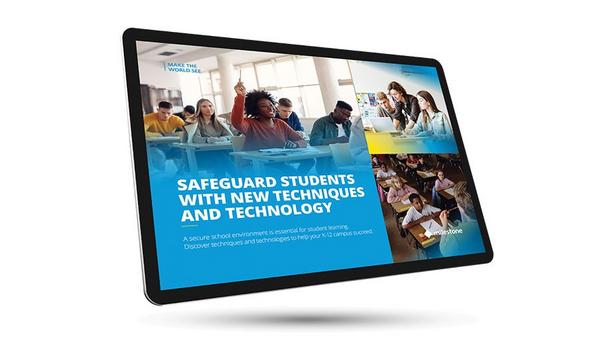
Safeguard Students With New Techniques And Technology
Download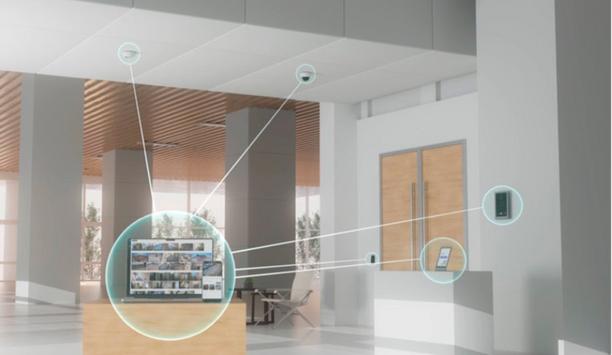
5 ways to strengthen physical security with an integrated system
Download
The benefits of Edge AI + Cloud for security systems
Download
Smart security cameras: excellence in retail
Download
Is access control in the cloud more cost effective?
Download
Innovative edge storage solutions for the video surveillance industry
Download
Enhanced Ethernet Technology (ePoE)
Download
Do you know the weakest link of your access control system?
Download

Videos
Security devices: Manufacturers & Suppliers
- Dahua Technology Security devices
- Vicon Security devices
- Bolide Security devices
- Vanderbilt Security devices
- Seagate Security devices
- Bosch Security devices
- Hanwha Vision Security devices
- Aritech Security devices
- Parabit Security devices
- LILIN Security devices
- VIVOTEK Security devices
- Hikvision Security devices
- BCDVideo Security devices
- Sony Security devices
- ComNet Security devices
- Videotec Security devices
- CEM Security devices
- Pelco Security devices
- AV Costar Security devices
- HID Security devices

Using artificial intelligence (AI) to automate physical security systems
Download
A modern guide to data loss prevention
Download
7 proven solutions for law enforcement key control and asset management
Download
The truth behind 9 mobile access myths
Download
Access control system planning phase 2
Download


